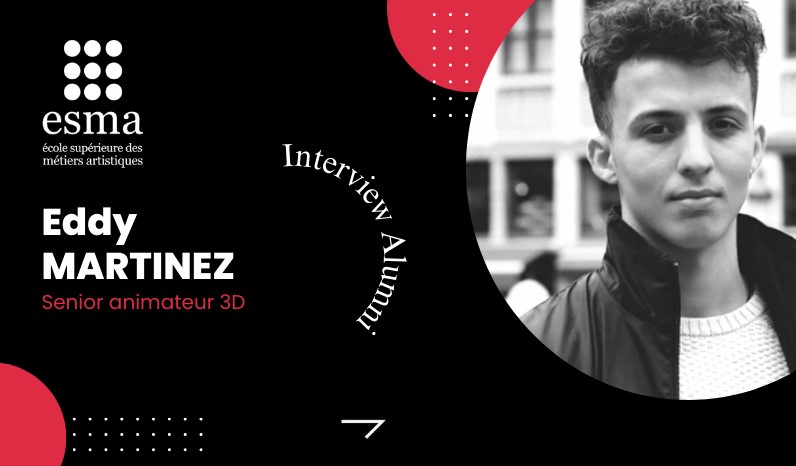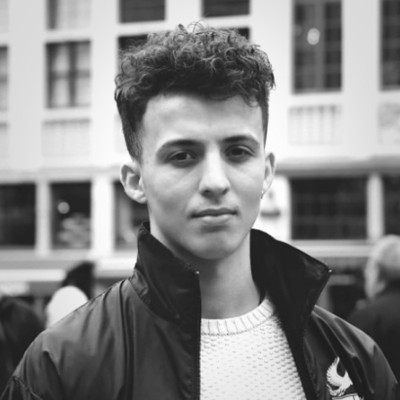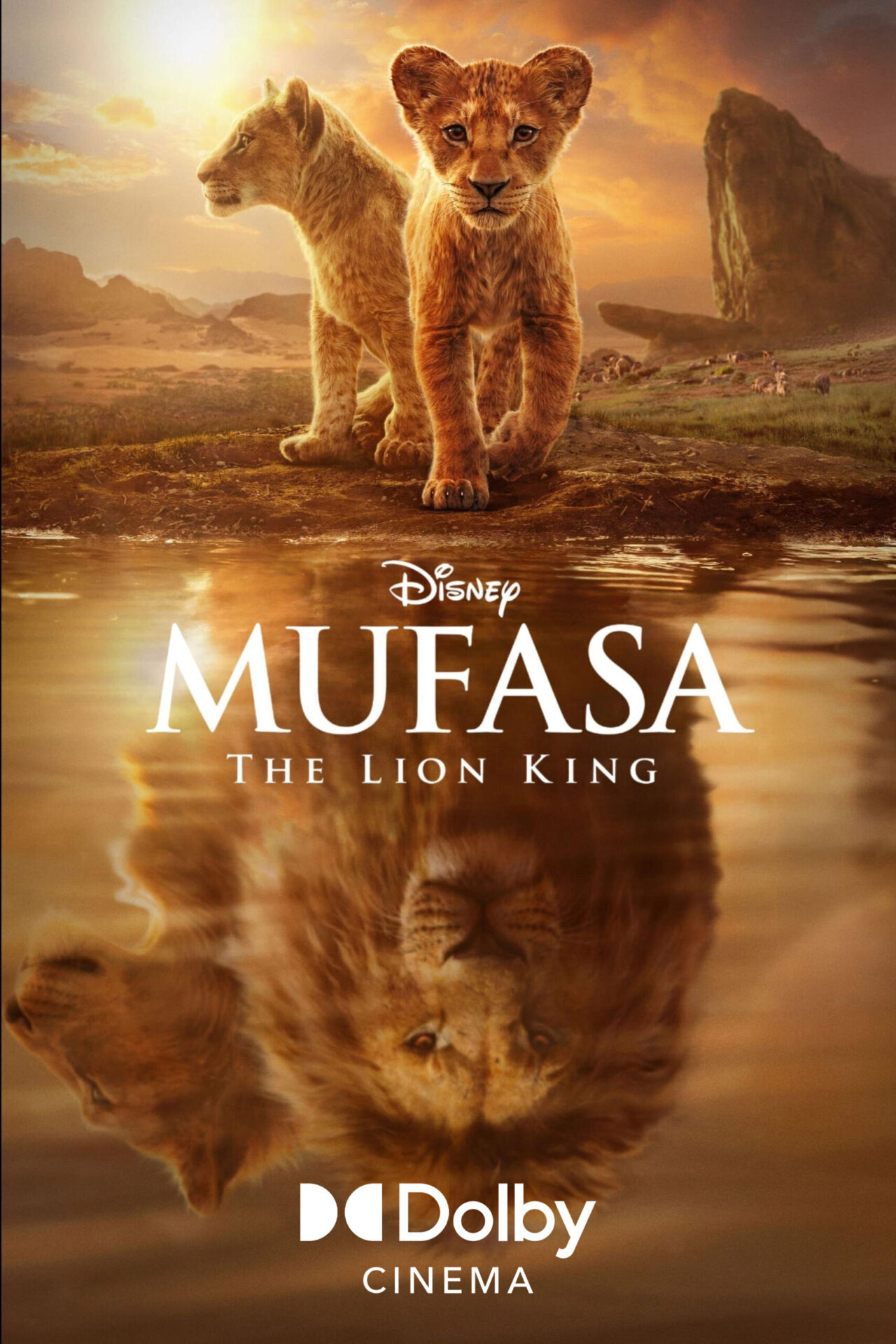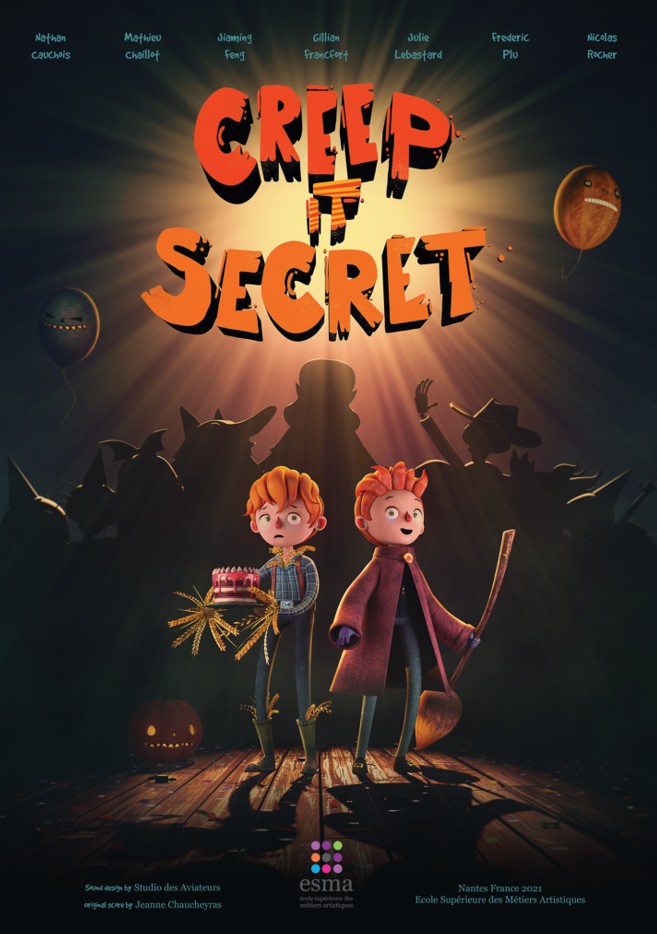
-

- Promotion 2017
- Training 3D Animation & FX
- currently works at Pixomondo
- position Senior 3D Animator
It is through movement that each artist brings their creations to life, exploring imaginary worlds at the edges of the most sinuous minds. Today we have the honour of welcoming Eddy Martinez, senior animator with a prestigious French VFX company. With a career spanning seven years in the film industry, Eddy invites us to immerse ourselves in the heart of an exceptional career, made up of profound inspirations and challenges, each more stimulating than the last
Can you talk about your career as a whole?
Hi, my name is Eddy Martinez and I’m a senior animator with a French VFX company. After my studies at ESMA, I had the chance to work in different countries such as Belgium, France and the UK. I started out working for a French company before moving to Belgium, where I was lucky enough to make a short animated film. My London experience gave me the opportunity to make the leap into the world of visual effects, moving from cartoons to VFX, and contributing to documentaries, commercials, films, series and even blockbusters.
What do you do in your current job?
As a senior animator, I’m at the heart of production. From rigging to rendering, I’m in charge of creating the characters’ movements. My role falls between pre-production and post-production, where I meticulously shape each animatable element
What made you decide to go into this profession?
Being a music fan from an early age, I was able to acquire a significant knowledge of rhythm. In fact, rhythm is probably the most important element in animation.
I’ve always had a passion for acting, which is why I’m particularly fond of animation: I bring the soul of the character to life, giving it meaning. Every animated element has to be meticulously crafted. I put myself in the shoes of each character and each object, with the aim of rendering them as naturally as possible.
It’s a passionate profession, more than that, it’s a vocation. I breathe life into things through movement.
Do you face any particular challenges in your job?
When I left ESMA and took my first steps in the big studios, I was confronted with the reality of the professional world. These challenges enabled me to become more independent, to gain self-confidence, but also to surpass myself. I’ve been lucky enough to be surrounded by inspirational people every day.
Is there a real difference between your studies at ESMA and the professional world?
Thanks to my course at ESMA, I was able to acquire a certain versatility in the world of animation. The many subjects taught there gave me an overview of the vast world of animation.
When I took my first steps into the professional world, I learned to fine-tune my work, paying attention to every detail and every movement to create the best possible rendering. Because, as everyone knows, it’s the details that make the whole. So I had to work on every aspect of each movement.
What qualities do you need for this job?
It’s essential to devote yourself more and more to your work every day. Animation requires considerable investment if you want to produce quality work. It’s a demanding job in terms of expectations, and particularly time-consuming.
What tools do you use in your job?
From ESMA to my current job, we mainly used MAYA, a well-known animation software. I’ve also had the opportunity to animate using 3DS MAX. Each studio uses its own tools, so it’s important to be versatile in this area.
What type of training have you taken?
After obtaining my baccalauréat, I enrolled at ESMA for a three-year Bachelor’s degree.
Why ESMA?
I’ve always wanted to work in the film industry. As someone who’s been passionate about art since I was a child, I always knew deep down that I wanted to make it my profession, my vocation.
What advice would you give to future ESMA graduates?
With the hindsight I have today, I would tell them to concentrate above all on the referencing aspect of animation.
One day, one of my superiors said to me “50% of animation is references”. It’s essential to refer to existing movements to achieve the desired movement. The work of referencing is colossal, but remains essential.
On average, how much time do you spend on each of your projects?
The time allotted depends on the project. Commercials generally have a two-month deadline, while blockbusters can take up to three years to complete. Each project has its own time requirements.





